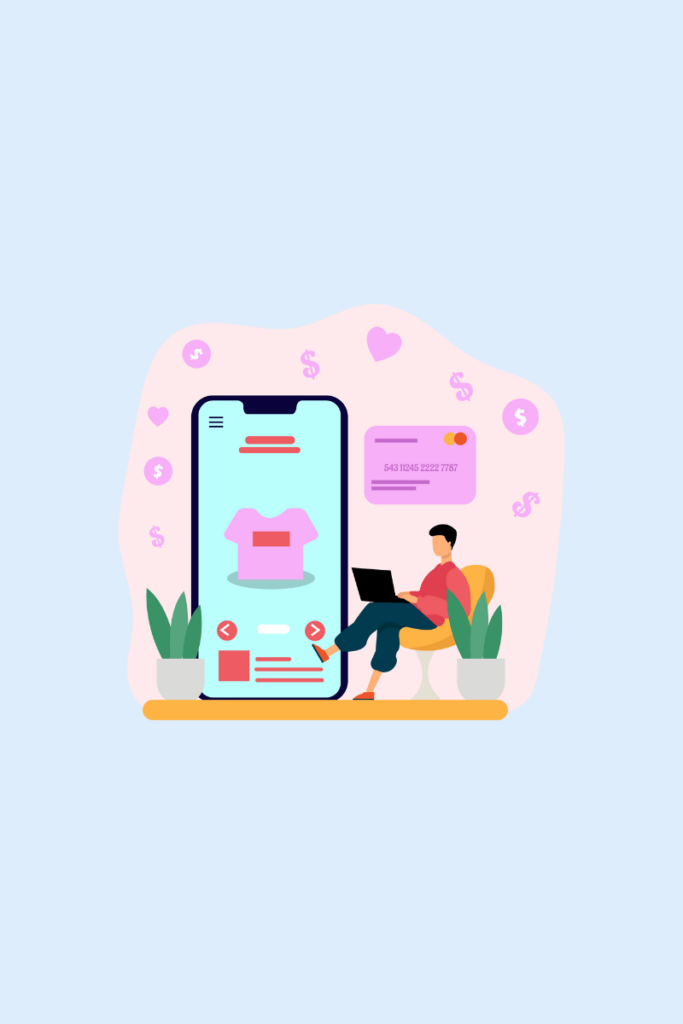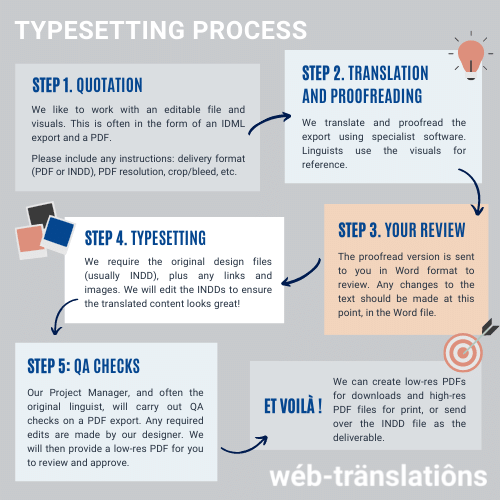Linguist Spotlight Round-Up
Over the past month, we’ve been shining the linguist spotlight on some of the incredible freelance linguists who make our work possible!
From Mandarin to Friulian, software to fine art, and funny phrases to heartfelt career stories, our linguist spotlights have given us a behind-the-scenes look at the people, languages and lived experiences that shape high-quality translation.
A truly global community
One of the most inspiring things about our freelance network is its diversity. Over the course of one month alone, we heard from linguists based in France, Italy, China, Spain and beyond – each bringing their own cultural insight and linguistic nuance to the table.
Their specialisms ranged from luxury marketing to technical translation, indie games to academic research. And yet, they all shared a deep passion for language, communication and connection.
The paths that brought them here
Every linguist has a story. Echo started out tutoring English before going full-time as a freelance translator (while pregnant with her second child!). Mercedes got her start subtitling films in London. Basel was inspired by his mother’s English teaching, and Laura returned to translation after exploring several other roles.
Whether they stumbled into the profession or pursued it with purpose, one thing’s clear: being a linguist often means carving your own path.
Thoughts on the future
It’s no surprise that AI and machine translation came up more than once. While opinions vary, our contributors agreed on one thing – the future of translation lies in balance. Technology is here to stay, but human creativity, empathy and cultural know-how will always matter, especially in fields where nuance is key.
Favourite phrases and language quirks
We couldn’t wrap up without sharing a few more of our favourite linguistic gems…
- From Arabic: تقبرني (taqburni) – “May you bury me.” A dramatic but affectionate way of saying “I love you so much I can’t bear to live without you.”
- From Spanish: Estar en la edad del pavo – “To be in the turkey age.” A very visual way to describe the awkwardness of adolescence.
- From Chinese: 啊,真香!(ā, zhēn xiāng!) – “Ah, this smells/tastes so good!” A viral expression used when someone ends up loving something they initially refused.
- From Friulian: No varìn migo di lassâsi come cjans? – “Are we really going to part like dogs?” Perfect for persuading your friends to stay for one more drink.
Thank you!
We’re so grateful to all the linguists who took the time to share their stories with us this month. Whether you’re a client, a fellow translator or just curious about languages, we hope you’ve enjoyed getting to know the people behind the words.
Don’t worry if you missed our linguist spotlight posts – you can head over to our LinkedIn to check them out!
We love working with amazing linguists from all over the world. Got a translation project coming up? Contact us – we’d love to work with you!
The Importance of Professional Subtitling for Your Business
In today’s fast-paced digital world, video content has become a cornerstone of communication for businesses across the globe. Whether it’s promotional material, educational resources, or entertainment, video is a powerful tool for reaching diverse audiences. But have you ever stopped to think about the role professional subtitling plays in making that content accessible and impactful?
Subtitles and captions are not just about adding text to a screen; they’re about bridging gaps – be it linguistic, cultural, or accessibility-related. Interestingly, many people use the terms ‘captions’ and ‘subtitles’ interchangeably, but they serve different purposes. So, what’s the difference, and why does it matter for your business? Let’s dive in.
Subtitles vs. Captions: What’s the Difference?

Subtitles are designed to translate spoken dialogue from one language to another. They’re primarily targeted at viewers who don’t understand the language being spoken. By breaking down language barriers, subtitles help businesses reach a global audience and make their content accessible to non-native speakers.
Captions, on the other hand, are more comprehensive. They provide a full transcription of all dialogue, along with descriptions of relevant sounds, such as background music or environmental noises. Captions are essential for hearing-impaired viewers and ensure inclusivity by conveying the full auditory experience in text form.
Understanding these distinctions is the first step in recognising their value for your business. If you have further queries, gov.uk has a clear guide to help you tell the difference.
Why Subtitles and Captions Are Crucial for Modern Businesses
Increased Accessibility
Accessibility is no longer optional; it’s a necessity. Captions ensure that individuals with hearing impairments can engage with your content, while subtitles allow you to connect with audiences who speak different languages. Inclusivity broadens your reach and helps build a diverse, loyal customer base.
Improved User Engagement
Subtitled and captioned videos aren’t just for accessibility – they’re also incredibly engaging. According to the BBC, studies show that viewers are more likely to watch a video to the end when it includes subtitles or captions. These features also allow users to consume content in sound-sensitive environments, such as libraries, offices, or public transport.
Enhanced SEO and Global Reach
According to LinkedIn, amongst other sources, adding captions improves your video’s discoverability on search engines, as the text can be indexed, making your content easier to find. Additionally, Subtitled videos are more accessible to international audiences, helping your business expand its reach across borders.
The Risks of Relying on Automated Subtitling and Captioning

While technology has made auto-captioning tools readily available, they come with significant pitfalls. Automated systems often struggle with interpreting accents, differentiating homophones, or understanding contextual nuances. The result? Subtitles riddled with errors or captions that fail to accurately represent what’s being said.
This lack of accuracy can lead to poor viewer experiences, frustration, and even damage to your brand’s reputation. Imagine a marketing video with poorly translated subtitles that misrepresent your product or message – this can have serious consequences for your credibility.
Why Professional Subtitling Services Make All the Difference
Investing in professional subtitling and captioning services ensures your content is accurate, reliable, and polished. Here’s why it’s worth the investment:
Precision and Context
Professional subtitlers consider cultural nuances, idiomatic expressions, and the tone of your content. They don’t just translate words; they ensure the meaning and intent are preserved across languages.
Customisable Formatting
Different platforms have unique requirements for subtitling and captioning. Professionals tailor the formatting to suit your needs, ensuring your content looks and feels right no matter where it’s viewed.
Compliance with Accessibility Standards
Professionally crafted captions help your content meet legal accessibility requirements, such as WCAG. This guidance ensures that your business achieves its commitment to inclusivity.
Get Subtitles Done Right
In a world where accessibility and global reach are more important than ever, high-quality subtitles and captions are non-negotiable. They enhance user engagement, broaden your audience, and protect your brand’s reputation.
Rather than relying on error-prone automated tools, trust professionals to deliver subtitling and captioning services that meet the highest standards of accuracy and quality.
Ready to elevate your video content? Contact us today for a personalised quote, and let us help you create videos that speak to everyone, everywhere.
The Need for Translation in an International Market
In this post we will be discussing the need for translation in an international market. As the world becomes increasingly interconnected, it is becoming more and more necessary to have your business accessible in a variety of languages. Imagine going to browse a website only to find that you can’t find the information you need because it’s not in your language – it would be pretty frustrating!
If you want to send your business into the international sphere, you need to be able to appeal to an international audience, but there is no such thing as an international language. You can’t assume that your clients will understand English. Nor can you expect your customers to put all of the information they need into online translation software. Often it won’t be accurate and will create a barrier between you and your clientele.
In the sales process, you want to avoid creating obstacles between your customers and their products.
So where do I start?
Once you’ve established your target market country, your best bet is to contact a translation or localisation agency to ask them to work with you to produce the most accurate and appropriate webpage in the target language.
This of course, costs money, so it is important to weigh up the risk vs. benefits of this investment. There are ways to mitigate the cost too: for example, common website features, like a page to check out a purchase, use similar, if not the same language. In some cases, this is a potential candidate for machine translation, which is often cheaper. Machine translation, however, won’t quite cover all situations.

So when can’t I use MT?
Machine translation can’t take into account the context of the translations – see our post on this here. In addition, most machine translation software doesn’t account for regional language variants. For languages like Spanish where there are such a wide range of dialects across the globe, the language will need to be translated differently for each as different terminology is used.
To summarise, having your website and products translated into the target language can improve international connections and give your customers a better impression – after all, if the customers can see the effort you put into making the website easy for them to use, they are much more likely to have a better impression of your business.
Follow us on Twitter, Facebook and LinkedIn for more translation updates and news!
How Translation Audits Can Benefit your Business
At Web-Translations we offer a comprehensive translation audit service, but what exactly does that entail? Let’s take a look at how our audits work and why they’re a valuable investment for you and your business.
What is a translation audit?
A translation audit involves selecting various sections of a document or website and asking a native linguist to review them. This is done in order to ensure that your translations have both high quality and fluency. During this process, the translator provides detailed feedback on multiple aspects of your text, including fluency, word choice, grammatical accuracy, and overall coherence, ensuring your content meets the highest standards.
Why invest in one?
Ensuring that your customers feel acknowledged and catered for is absolutely essential. Errors in your website text can negatively affect customer perception. This in turn can make them feel that you’re not putting in the necessary effort. By accommodating foreign language customers, you can expand your business and make your existing customers feel truly appreciated.
The statistics back this up too. According to the CSA, 76% of customers prefer purchasing products with information in their own language. Furthermore, their research shows that 75% of respondents are more likely to buy from the same brand again if customer care is provided in their language. Clearly, catering to your customers’ language preferences can significantly enhance their experience and boost your business.
Who is it right for?
If your company has relied on Machine Translation in the past, investing in a translation audit can be incredibly beneficial. It’s a smart move to ensure your website meets the highest standards of accuracy and quality. With a thorough review by native linguists, you can identify and fix any issues, making sure your content truly resonates with your audience and reflects your brand’s professionalism.
Our audits can also help you check if your previous translations are up to scratch. Even if they were completed by a professional linguist! This can ensure that your translations are accurate and up to date – after all, translators are only human!
How does a translation audit work?
There are 3 main steps to a Translation Audit
1. Initial Review: Once you choose your audit plan, you’ll provide us with the specific pages you want reviewed—whether it’s top-level web pages or more detailed content. We then distribute these to our team of native linguists who assess the quality and accuracy of your texts.
2. Checks by Native Linguists: Our skilled native linguists thoroughly check your content, proving detailed analysis and insight into improvements they suggest. This ensures that every nuance and detail is spot on.
3. Feedback and Refinement:
If No Errors are Found: If everything is perfect and no changes are needed, great! Your text stays as it is, and you can be confident that it’s performing well.
If Changes are Required: If there are any issues, we’ll work with you to refine and correct your texts, making sure your publications are polished and effective.
Investing in a translation audit guarantees that your content is of the highest quality, significantly enhancing your credibility and strengthening your connection with your audience. By ensuring your texts are accurate, fluent, and culturally appropriate, you demonstrate a commitment to excellence that resonates with customers and sets your brand apart.
If you think a Translation Audit might be the best next step in developing your website, contact us for a quote today!
Breaking into the International Market? Here are some pointers!
Breaking into the international market comes with several challenges: different regulations, time zones, and language barriers. But maybe your business has a reached a point where you feel ready to take the leap. Here are some tips:
How?
Moving your business into the international sphere takes careful planning and preparation.
Depending on the countries you choose to expand into, there are different factors you need to consider for each, including your customers’ language or language variant, their time zone, and their culture.

You will likely need to adapt your website beyond just translating the language. This process is called localisation, where the content is adapted to meet the cultural norms of the target audience.
It is also necessary to know the business culture and set up in your target country as each one will work slightly differently. For example, in the UAE, some businesses may require a partner local to the country due to regulations.
Why make the effort?
Thanks to digitalisation and increased internet usage, it’s as easy as ever to cross borders in seconds from the comfort of your own home.

By breaking into the international market, you allow your business to reach new markets, and therefore, new customers. This should boost sales! According to the Harvard Business Review, brands that have localised sales content are 1.5 times more likely to make a profit than businesses that don’t! It also provides your company with a competitive advantage. If you can send what the customer wants to their country, of course they’re going to choose you over a company that can’t. In addition, CSA Research reports that if aftersales services are offered in their native language, 75% of consumers are likely to consider purchasing from the same brand again.
In short, to successfully expand into a new country, you need to understand your new client base, what their likes and dislikes are, and any cultural taboos to avoid! You wouldn’t want to sell wine in a country whose culture frowns upon consuming alcohol!
At Web-Translations, we can help you translate your website to grow your business internationally. Read some of our testimonials here, and see how we’ve helped other businesses. Contact us with any queries you have!
Social Media Translation: Challenges and Solutions
We all know how important social media is in today’s society. Your social media platform and website is your online shop window – a way to attract customers to find out more. However, many businesses only write their content in their native language. Translating social media content does however have its challenges. After all, adapting and launching your product or service in another country is a huge task. In this blog, we’ve highlighted some of the challenges that you may face but also some suggestions that may help you overcome them too.

The Challenges
Culturally Appropriate
It’s important to ensure your content is suitable for the target audience. This is particularly important for brand names and slogans, but also for images. We have seen some translation mishaps when dealing with brand names. For example, Mercedes-Benz attempted to enter the Chinese market using the brand name ‘Bensi’. This was a shortened brand name to suit the Chinese market, but unfortunately it translates to ‘rush to die’. This is certainly not something that you want to associate with your brand and was damaging for their reputation. On the other hand, a good example of translating a brand name is Carrefour’s for the Chinese market (家乐福 ). This translation relates to the pronunciation of Carrefour, but it also means ‘a family being very happy when shopping in the supermarket’.
Platform
There are various platforms that are used globally, so it’s certainly worth looking into these before making this decision. The different platforms have their own rules and ways of communicating. Facebook is predominantly text, but Instagram is full of images and videos. This means that the images would need to be culturally appropriate and tailored to the country’s audience. In this survey, ‘72% of consumers now say they only engage with marketing messages tailored to their interests’.
It’s also a good idea to subtitle your videos if there is dialogue, so that they are accessible globally. It’s not just the format, that varies, it’s also the length of content. LinkedIn allows you to share long, in-depth content, but Twitter has a very short character limit. This character limit makes it difficult to translate into language that expand during translation. English into French translation for example expands by 25%.

SEO
Translating your content helps you to reach your international audience, but if it’s not Search Engine Optimised, few people will actually see it. There is a huge amount of content shared on the internet every minute of every day. To put this into perspective: 95 million photos and videos are shared on Instagram each day, translating to 65,972 each minute! This is why it’s important to optimise your content. You may already optimise the content in your native language, but the same also needs to be done to your multilingual content. This is where we come in. Translating keywords isn’t as simple as finding the equivalent meaning in the target language. For example, in English you may use ‘houses to buy’, but when translating into German for example, ‘apartments to rent’, as this would be a cultural difference.
It’s a daunting task adapting a brand for another target audience, but it’ll make your audience feel valued. This, in turn, will increase your sales conversions since consumers feel more comfortable purchasing in their own language. We are experts in translation, so we can help protect your global reputation. If you’re interested in localising your social media content but are unsure if on the best way forward, feel free to get in touch and we’d be more than happy to offer our advice!
Social Media Translation: Things to Consider
We all know how important social media is in today’s society. After all, your social media platform and website is your online shop window – a way to attract customers to find out more. However, many businesses only write their content in their native language. But what about your international audience? They need to feel valued too. In fact, 57% of consumers will increase their spending with a company when they feel valued, and 76% actually choose to buy from them over a competitor. And this is where social media translation comes in!
Social media can be difficult to use at times with the various platforms and their immediacy. This makes translating your content into various languages more challenging. But we’re hoping that this blog will make it easier to navigate within the world of social media and reach out to your international audience.
Why is Social Media Important for Business?

Social media influences a lot of our purchasing decisions without us really realising – from paid ads to influencers. Your online presence allows customers to view your products and services 24/7 from the comfort of their own home, on the train and even during their coffee break. 57% of people say that social media influences their shopping decisions, so why not make the most of this as a business. Trading globally has never been easier!
Tips for Social Media Translation
It’s important to really consider who your audience are before translating your social media content. Below are some points to consider:
- Which languages to translate into? It’s important to consider where your product or service is performing/ would perform the best. From here, you can determine the language variant. For example, if you want to target Latin America, you can specify whether you want to use Mexican or Colombian or an alternative Spanish variant.
- What interests them? It may be necessary to adapt your product to be more appealing to your target audience’s interests and culture.
- Which platform is most suitable to your target countries? In North America and Europe, LinkedIn is used more, but in Latin America, it’s Facebook. So it’s certainly worth looking into this to reap the most rewards from the translations.
- What format would your audience react best to and what tone do they prefer content to use? Maybe an e-book or a video? Do they prefer a direct tone or maybe something with a little more emotion?
It may seem like a lot to consider when translating social media content, but it’ll make your audience feel valued. This, in turn, will increase your sales conversions since consumers feel more comfortable purchasing in their own language.
If you’re interested in social media translation but are unsure on the best way forward, feel free to get in touch and we’d be more than happy to offer our advice!
Lifting the Lid on Desktop Publishing
Do you need to translate PDFs, brochures, or other carefully designed content? And have you considered that the layout of these translations may need to change slightly in order to accommodate longer texts, or right-to-left languages?
There’s no need to worry, as we offer a desktop publishing service that will help. Read on to find out how we can help you create perfectly localised materials for print or download.
What is Desktop Publishing?
If you haven’t heard of the term desktop publishing before, you may have heard it referred to as typesetting or DTP. This process involves using design software, such as InDesign, to create files with customisable layouts for print or download.
Simply translating an IDML file export won’t mean that your translated file is ready for printing right away. A specialist designer needs to import the translated file into InDesign, and make any changes. These changes can include:
- Lengthening text boxes
- Changing font sizes
- Tweaking elements
- Adding line breaks
- Formatting embedded graphics
The aim of this process is to make the translated file look as good as the original, whilst avoiding the ‘this has been translated’ look.
The Process

Why use Web-Translations?
Text could expand or contract by around 25% once it has been translated. This may cause some issues when trying to retain the original file’s formatting and layout. If you haven’t planned for this in advance, our designer may need to reduce a font size or increase the size of a text box, for example.
Non-Latin alphabets can also be difficult to work with for the uninitiated. One example of this is Arabic, which reads from right to left. This means that the entire page layout needs to be reversed. As most designers don’t have experience with translation and probably don’t speak the language of the target text, it can be difficult for them to rework the layout and format of the translation. In fact, some designers may even introduce errors to the translated content, as they are not translators themselves. At Web-Translations, however, we could save your designer’s both time and effort, as we have the skill to adjust the formatting and page layout of your translations ready for print.
Our experienced typesetters can tackle anything from business cards to technical manuals, and from packaging to posters, so it’s safe to say that your content is in good hands. But if you’re in the process of designing new marketing collateral for translation, check out our blog post on translating PDFs for some pointers.
Differences Between Languages
As we mentioned earlier, texts can become considerably shorter or longer during the translation process, as each language has its own structure and set of characteristics. Below we’ve provided a few examples of how much some languages can expand or contract when translating from English:
| Language | Average Expansion/ Contraction |
|---|---|
| French | 20% longer |
| German | 20% longer |
| Korean | 10% shorter |
| Swedish | 10% shorter |
| Arabic | 25% longer |
| Spanish | 20-30% longer |
| Finnish | 30% shorter |
| Norwegian | 15% shorter |
We hope these figures give you a better idea of the differences between the languages, and that you’ll be able to bear this in mind when creating your carefully designed documents.
To find out more about our language solutions, please visit our Services page. Or, if you’d like to talk to us directly, why don’t you fill in our contact form? We’re more than happy to help.
Chinese web localisation could transform your business.
Chinese e-commerce grew by 66% in 2011, representing a turnover of 93 billion euros.
With more than 513 million Internet users and 356 million mobile Internet users, according to the 29th Statistical Report on Internet Development in China by the China Internet Network Information Center, China is the world’s largest online market, and this population is continuing to grow.
With rapid improvements in the technological infrastructure there, use of the Internet is continuously evolving and becoming more sophisticated. Combine this with China’s growing middle class who have more buying power than ever before, and you can see why online shopping has become so huge there so quickly. A 2011 study of online buyers worldwide conducted by PricewaterhouseCoopers found that 86% of China’s nearly 200 million online shoppers considered themselves experts at ecommerce, compared to 70% in the UK and 72% in the USA.
With an average of 8.4 online purchases per month by online buyers, China makes developed Western Internet economies look like ecommerce newcomers. For comparison, online buyers in the US made an average of 5.2 purchases and 4.3 in the UK, while in France and Netherlands just 2.6. In Germany, Europe’s largest and strongest economy, this figure was 2.9 purchases. Who are you considering selling online to at the moment? Germany? France? Or maybe China?
Only 42 million people in China (8.2% of Internet users) used travel booking services in the last year. However, the Chinese travel market is predictably seeing fast-paced growth in the coming years so online travel booking businesses are expected to experience higher growth there. South African Airways Simplified Chinese website for mainland China is an example of a full Chinese site translated by Web-Translations.
China’s scale, combined with its online population’s embrace of online shopping, present an important opportunity for businesses wanting to “go international”. However, setting up a business and subsequently succeeding in this country where almost everything is different can prove challenging. Consumer tastes, strict regulations, government involvement, Internet censorship, cultural differences and bureaucratic processes are some of the issues companies need to examine when entering China’s online market, yet the potential seems to outweigh the obstacles bearing in mind the current economic situation we find ourselves in in the West.
Recently we have completed International Blasts for China for some of our clients who aren’t afraid to begin facing this challenge: Brandy Classics and Click Meeting by Implix. This service is a great first step for companies interested in China by setting up a microsite and optimising it so you can begin to see the traffic to your site and interest in your product over there.
To find out how to launch a Chinese version of your website to start selling to China, please contact Web-Translations: sales[at]web-translations.co.uk / +44 (0) 113 815 0460.
First Time Exporters: Full Support for your Website Translation
As the liberalisation of global commerce continues, more and more companies are joining the international market every year. Exporting has traditionally been seen as one of the most risky, and expensive ways to grow a business. While there are many pitfalls and challenges when trading internationally, the Internet offers an excellent way for you to reach out and grow your market share, without investing millions.
Global trade has never been so easy with the First time Exporters Guide. By working with Web-Translations you will have a partner to help you at every stage in your journey. We combine years of experience, with top-quality language and web skills to offer a hand-held, strategic approach to boosting your global trade.
(more…)
Rapid growth in Turkish eCommerce
Taking a bite from the Turkish delight will reap sweet rewards for online retailers
Turkish e-commerce transactions reached an impressive $12.3 billion in 2011, representing an increase of 57% on the previous year according to the Interbank Card Center. Combine this upsurge with the 12% per year e-commerce growth Forrester Research Inc (FORR) predicts for European growth over the next 5 years, and it becomes obvious that it’s time to pay attention to Turkey.
Impressive statistics, but what’s going on?
Half the population of Turkey is under 30 years old. This young society has been quick to adopt technological innovations and they now spend more time online per week than the worldwide average. This tendency translates into a high responsiveness to social media – 89% of Turkish Internet users are on Facebook and they are the 11th most active country on Twitter.
95% of the Turkish population are expected to have a mobile phone in 2013, with global corporations such as Telecom Italia having already entered Turkey to take advantage of this.
Furthermore Turkey has a credit driven economy, with a 62% credit card penetration among consumers. All of this has led to a positive environment for the development of Turkish e-commerce.
Brazil’s eCommerce market expands by 26% in 2011
E-commerce is booming in Brazil. Supported by a growing middle class, Brazil’s e-commerce total revenue for 2011 was over $11 billion; that’s an increase of 26% compared to 2010 ($8.4 bn). In total, 32 million consumers in Brazil bought at least once via the web in 2011, and the eCommerce market is estimated to be worth around $12.7 billion this year.
So what do Brazilians buy online? The most popular categories reflect the needs of Brazil’s new middle class:
- Home appliances (13%)
- IT (12%)
- Health/beauty/drugs (11%)
- Books and magazine subscriptions (8%)
- Electronics (6%)
Despite this steady growth, many Brazilians still avoid shopping on the internet out of concern about the security of online transactions. The same goes for Internet banking. 26% of Brazilians don’t use online banking, according to a recent survey, and 58% gave the reason that it felt unsafe. The next few years should see a shift in this perception, as banks and etailers work together to improve security and ease of use, and consumers become more familiar with ecommerce and online banking.
Meanwhile, Brazil has developed solutions to overcome these obstacles. One of them is the boleto bancario, a small slip like a proforma invoice that customers can print out and pay at a bank. This is a very common option, which helps to solve the problem that most Brazilians don’t have a credit card. In fact, 55% of the population still receive their salaries in cash, especially those in manual jobs such as housekeeping and construction workers.
All in all, this adds up to a market with huge potential for those companies willing to adapt and make the necessary concessions to make Brazilian consumers feel at ease.
To find out how to launch your website in Brazil and other overseas markets, contact Web-Translations: sales[at]web-translations.co.uk / +44 (0) 113 8150460.
Visit Web-Translations at Internet Retailing Expo next week
Web-Translations will once again be exhibiting at this year’s Internet Retailing Expo (IRX) at the Birmingham NEC next week, on 21st & 22nd March.
Now in its second year, IRX brings together leading marketing, software and service providers to help multichannel online retailers grow and succeed.
IRX is designed to show etailers the next steps in building their business now that the web has matured, and includes a jam-packed workshop and multiple-track conference programme. With around 5,000 visitors expected over the two-day event, it will no doubt be a great source of new opportunities for exhibitors and delegates alike.
(more…)
3-Steps to a successful multilingual website
We’re combining our 3 lead web services to help your website launch in international markets with a bang.
All good things come in threes – that’s certainly true when it comes to launching your website in a new language and country. Follow these 3 key steps to start seeing results from your website:
When Should Your E-Commerce Startup Go Global?
Selling online has enormous advantages over a traditional business model.The main one is the ability to be instantly global, in the sense that your website can be accessed by anyone, anywhere, anytime. However, very few e-businesses take a global approach from the outset or even seriously consider harnessing this potential once they have reached scale in their home market. (more…)
Tips for international ecommerce success this Christmas
Yes, it’s a bit early to mention Christmas, I know, but savvy online retailers are already in the midst of preparing for the festive period.
Success stories such as Amazon and ASOS have shown that international sales can have a huge impact on an ecommerce business, so it’s hardly surprising that more retailers are jumping on this bandwagon and localising their websites to open up shop to international customers.
Before jumping in with both feet, however, there are a few things you can do to ensure your international online sales go smoothly ahead of the festive season: (more…)
Domain names are going global
Until last year, domain names could only be created using Latin characters a-z and numbers 1-9. This excluded accented characters and scripts such as Arabic, Chinese and Korean. In 2010, the use of non-Latin scripts in domain names was enabled, limited at first to the use of the country’s name in the official language.
Just how important is it to have domain names in various languages? We have previously discussed the importance of translating a website (obviously something we believe in!) in order to reach a wider audience, and surely domain names are an extension of that. Do Arabic speakers trust sites with domain names ending in .com or .co.uk? According to recent reports by the BBC, whilst some argue that domain names are becoming less important, given the ever-increasing popularity of social media networks such as Twitter and Facebook, others believe a good domain name is a sign of the importance and standing of a website. If potential visitors are discouraged from visiting a site that is only available in another language, surely the same applies to domain names? (more…)
How important is it to translate a website?
In a recent poll, 90% of internet users in Europe would visit a site in their own language when given the choice. Meanwhile, 53% would still use a site if it was in English rather than their native language. However, despite this relatively high figure, these users would not necessarily be happy about the lack of information available in their own language, with 44% of respondents stating that they felt they did not necessarily receive all the facts when the website was only available in another language. (more…)
Advantages of local hosting for multilingual sites
A few customers have recently asked me if they should host their multilingual sites locally for the market they are targeting, while others with locally hosted sites have asked me about the implications of moving to the cloud.
Reading between the lines, the premise of such questions tends to centre around SEO and so my post is somewhat more marketing-oriented than IT. All comments are welcome.
Wéb-Tränslatiôns partners with euro.message in Turkey
Web-Translations is pleased to announce its partnership with Istanbul-based e-marketing company euro.message.
euro.message is one of the 50 fastest-growing technology companies, and the largest e-marketing service provider in Turkey. (more…)




